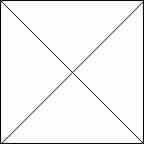

This New Zealand genus comprises seven species of nocturnal geckos, partly terrestrial and partly arboreal. They are brown or grey in colour and have expanded toepads. Coborn reckons they would make good pets but notes that they are rare and protected by law. Formerly they were found on the main islands but were eliminated from this range by the depredations of introduced animals.
|
|
|
Distribution | Size (max) |
|
| Hoplodactylus | ||||
| H. chrysoireticus | Gold-Striped Gecko | New Zealand |
|
Brown/grey in overall colour with longitudinal stripes. |
| H. delcourti | Delcourt's Gecko/ Kawekaweau | New Zealand |
|
Known only from a single, impressively large, specimen collected in the 18th century, this giant gecko is now sadly believed to be extinct, although it may conceivably have survived in remote areas. If it has, it would easily be the world's largest gecko. |
| H. duvauceli | Duvaucel's Gecko | New Zealand (offshore islands of North Island, Cook Strait) | 12" | Brown/grey in overall colour with greenish mottling which creates excellent camouflage. Unusually, the underside is sometimes darker than the dorsal surfaces. Prefers low scrub on the edges of woodland, where it forages at night. By day it conceals itself under ground litter, fallen tree trunks or occasionally behind loose bark in the burrows of ground-nesting birds (Coborn). The young are relatively large: they are born in late summer/early autumn. |
H. granulatus |
Forest Gecko | New Zealand | 7" | Preferred habitats bushes and trees. Click here for some more pictures. |
| H. kahutarae |
Black-Eyed Gecko | New Zealand (Seaward Kaikoura Range, South Island) | ?" | This is an alpine lizard, dwelling about 1,000ft higher than its congenerics in areas covered by snow for 3-5 months of the year. It is extremely rare and considered a threatened species. |
H. maculatus |
Common Gecko | New Zealand (except Taranaki and Fiordland) | ? | Variously considered a member of the Hoplodactylus, Naultinus, Gehyra and a couple of other now-invalid genera before being finally assigned to the Hoplodactylus genus in 1965. Older literature may refer to it as H. digitatus or Gehyra pacifica, while one authority considers it to be the same species as H. granulatus. See the EMBL database entry for details. |
| H. nebulosus |
Cloudy Gecko | New Zealand | ?" | Possibly a subspecies of H. granulatus. |
| H. pacificus | Pacific Gecko | New Zealand | 6" | Variably coloured but normally brown/grey in overall colour, marked with bars or chevrons of darker brown. It is fairly common, especially near the coasts. Nocturnal, it spends the day under stones or fallen tree-trunks. In captivity it is apparently easy to care for. |
| H. rakiurae |
Harlequin Gecko | New Zealand (Southern Stewart Island) | ?" | Threatened species. |
| H. stephensi | Stephen's Island Gecko | New Zealand (Stephens and Maud Islands, Cook Strait) | ? | Brown/grey in overall colour with longitudinal stripes. |
The information above was culled from a number of sources, including Mattison. The Gekko-specific books are as follows:
Lizards of the World, Mattison
Breeding and Keeping Geckos, Coborn, TFH 1995 - a particularly valuable book for lesser known geckos, especially the Diplodactylines.
Keeping and Breeding Lizards, Mattison
Geckos: Keeping and Breeding Them in Captivity, Walls and Walls, TFH 1999.
Reptile & Amphibian Magazine, Jan-Feb 1996, has a good article by Rod Rowlands on the Green Tree Gecko of New Zealand.
Recently the Caitlins Blue-Eyed Gecko was discovered in forests in New Zealand after a prolonged scarcity.
A good concise site on New Zealand's native geckos.
Richart's "Hoplodactylus Canterbury" - very nice pictures of a beautiful gecko.
Back to Diplodactylids | Back to Geckos | Back to Lizards | Back to Reptiles | Back to Homepage